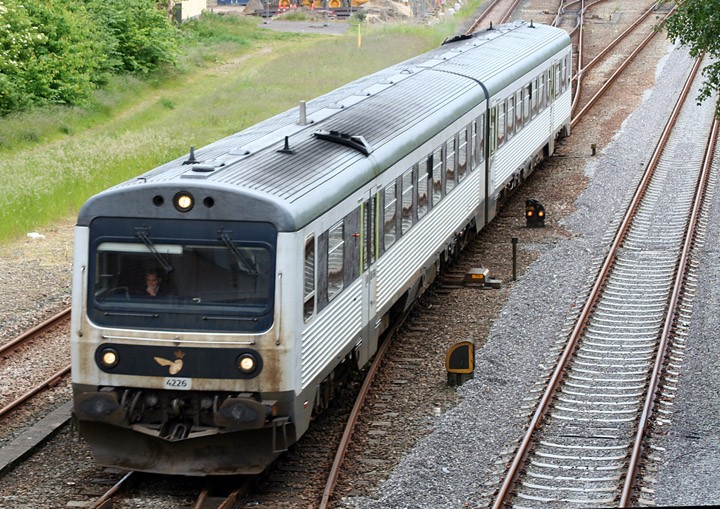Commuter rail here existed 100 years ago in the form of the Winnipeg, Selkirk and Lake Winnipeg Railway (ca. 1908 - 1939) ... interurban trains. They were replaced by Beaver Bus Lines in 1948 and haven't returned since.
 |
| Interurban train on Eveline St. (Selkirk, Manitoba) |
While electric transit with its guy wires are cool looking, lots of bigger metropolitan areas use DMU (Diesel Multiple Unit). These were called Interurbans in the early part of the 20th century, and later Budd Rail Co. called them RDCs (Rail Diesel Cars). Either way, they enable a transit authority to provide expanded capacity to haul many more passengers at one time than a bus, and do it more comfortably.
The current bus line between Winnipeg and Selkirk could use improved options for passenger travel between both cities.
In fact, the Partnership for the Manitoba Capital Region ... stated in their Capital Region Transportation Master Plan (CRTMP) released in 2014:
The large majority of the survey respondents indicated the City of Winnipeg as their primary residence.Current populations of metro Winnipeg and points north:
Major themes generated by the survey questions and respondent feedback included:
...
A need for alternative modes of transportation including active transportation and regional transit.
There is currently ample population that could handle a DMU-type transit, as a replacement for the Beaver Bus. It's time to switch back to rail, which helped this region grow.
Service could also be extended somehow to the communities on the east side of the Red River, such as East St. Paul, which currently lacks any form of public transit.
The current Beaver Bus schedule provides 11 runs from Selkirk and 11 runs from Winnipeg, daily. The trip one-way takes about 55 mins.:
No bicycles are allowed on Beaver buses. So, for example, if a person in Winnipeg wanted to do a day trip to Selkirk and ride around, they could not do it. However, if the Beaver bus was replaced by a Beaver train you could accomplish this.
The whole Beaver Bus fleet consists of several Orion V buses, each with a passenger capacity of about 50 each. A rail-based DMU could handle about 70 seated passengers at once per rail car, 140 if two cars were joined.
One of the benefits to using DMUs is that each rail car is self-powered, so adding extra rail cars for capacity doesn't burden the lead car.
See also:
IRFCA - DMU FAQ
RM of St. Andrews - Winnipeg, Selkirk, and Lake Winnipeg Railway Co.
Bombardier VLocity DMU in Australia



No comments:
Post a Comment